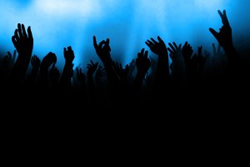The band has just finished rockin’ it with Whom Shall I Fear [God of Angel Armies] and they bring it down a notch…way way down. I’m talking dropping out the drums, bass, and electric guitar and going with piano, acoustic guitar, and a vocal.
You need to make some mix changes and fast. What can you do?
Look To Yesterday
Paul “Pab” Boothroyd, a live sound engineer, has served in the pro industry for a long time, including ongoing work with Beatles frontman Sir Paul McCartney. In working with McCartney, Boothroyd has had to tackle the very issue of going from a rocking song into a much more intimate song, namely, Yesterday.
How does one jump from one song extreme to another? Very carefully.
The live version of Yesterday features McCartney on vocals (duh!) and acoustic guitar. Add in a keyboard-controlled string quartet arrangement and you’ve got a horse of a different color. (I’ve always wanted to say that.)
In the words of Boothroyd: “For a quieter song to follow [a rocker], you have to increase the presence…I give the master faders a bit of a nudge, and push Paul’s vocal channel up a little.”
Of course, it’s more than just volume changes that are required. “The vocal has to be clean, clear and sit forward in the mix,” he adds. “Paul’s guitar is more of a comfort blanket that keeps the tempo and it doesn’t need to feature, whereas [the] keys are key to what people remember of the song. I ride the fader up and down so that the high, thin-sounding violin doesn’t cut too harshly and the low end of the cello doesn’t get lost. You have to balance the sounds quite delicately.”
Much to think about, but before moving on, just one more quote…
“I’ll sometimes pop out a few high-pass filters on the vocal and guitar inputs to help the channels breathe more dynamically when Paul’s playing softly. There’s certainly no compression going on at that point though, which gives the sound a little more sparkle, with more vocal information passing through the PA.”





















